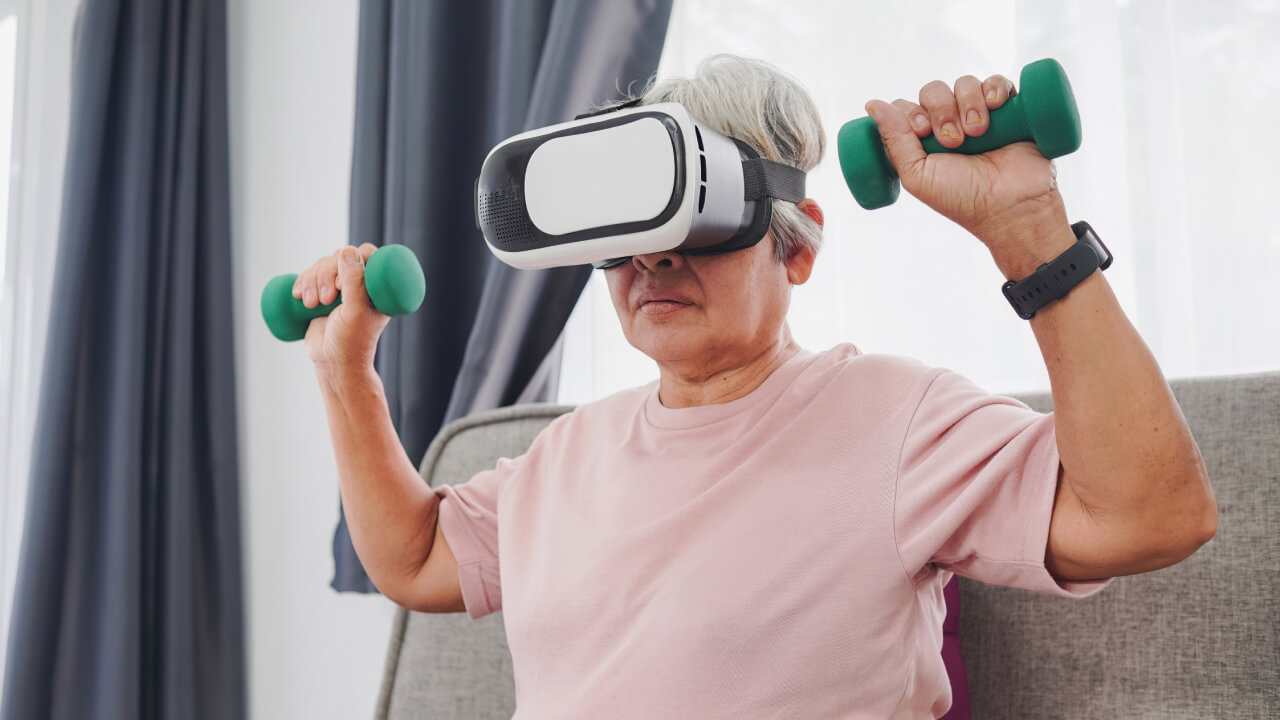Abstract
As the automotive industry accelerates toward fully autonomous vehicles, the debate intensifies over the optimal sensor technologies to ensure safety, reliability, and efficiency. Radar, LiDAR, and machine vision each offer unique advantages and face distinct challenges. This article comprehends an overview of the discussion held by our panel of experts who dissected the strengths, limitations, and future prospects of these sensing modalities, exploring whether a singular approach or a synergistic combination will pave the way forward.
Panelists

John Stih
Sensor Specialist at Future Connectivity Solutions

Sevin Samadi
Sensors Specialist at Future
Connectivity Solutions

Lazina Rahman
IoT/Connectivity Specialist
Moderator
Introduction
The journey toward fully autonomous driving is not only reshaping transportation technology but also driving significant market growth. According to Fortune Business Insights, the global autonomous vehicle market was valued at USD 1,500.3 billion in 2022 and is projected to reach USD 13,632.4 billion by 2030, growing at a CAGR of 32.3% during the forecast period.*
This rapid expansion fuels an industry-wide debate: Which sensing technologies will best support this evolution? Manufacturers and developers are grappling with whether radar, LiDAR, machine vision, or a combination of all three will lead the charge.
Each technology presents distinct strengths and limitations that shape safety, cost, and design strategies. In this panel discussion, we unpack these complexities with insights from experts who examine the current landscape and the future of autonomous vehicle sensing.
*As per Fortune Business Insights (last updated 2025) Autonomous Vehicle Market Size, Share & COVID-19 Impact Analysis, By Level (L1, L2, & L3 and L4 & L5), By Vehicle Type (Passenger Cars and Commercial Vehicles), and Regional Forecast, 2023-2030 https://www.fortunebusinessinsights.com/autonomous-vehicle-market-109045
Our editorial approach:
This report is edited, structured, and verified by the Future Content Development team based on the insights from our panel discussions. Transcripts were refined and polished with the assistance of AI, blending automation and human expertise to deliver a clear and accurate final piece.
Sensor Technologies: Strengths and Limitations
Technology | Strengths | Limitations |
Radar |
|
|
LiDAR |
|
|
Machine Vision |
|
|

Graphic transcript
Values: 5 highest, 0 lowest
(Smaller footprint rates higher on footprint size)
Attribute | Radar | LiDAR | Machine Vision |
All-weather operation | 5 | 2 | 2 |
Footprint size | 5 | 2 | 4 |
Distance/speed measurement | 5 | 4 | 2 |
Resolution | 2 | 5 | 4 |
Object classification | 1 | 4 | 5 |
3D mapping | 1 | 5 | 3 |
Cost-effectiveness | 4 | 1 | 5 |
AI enhancement | 2 | 3 | 5 |
Low-light performance | 5 | 3 | 2 |
Depth perception | 2 | 5 | 3 |
Integration vs. Singular Approach: Finding the Right Fit
One of the most debated questions in the development of autonomous vehicles is whether a single sensing technology can effectively lead the way, or whether a combination of sensors is necessary to achieve safety and reliability.
The panelists emphasized that there is no universal answer. Some companies, like Tesla, advocate for a vision-only approach, relying solely on cameras and powerful neural networks to interpret the driving environment. This strategy focuses on cost-effectiveness, scalability, and software-driven advancements to enable autonomy.
On the other hand, companies like Waymo have opted for a multi-sensor solution, combining LiDAR, radar, and machine vision to build a more comprehensive and redundant sensing system. This layered approach prioritizes safety through redundancy, providing a reliable 360-degree view of the vehicle’s surroundings—essential for detecting cyclists, pedestrians, and fast-moving vehicles in complex traffic scenarios.
The panel agreed that the choice between a singular or integrated approach ultimately depends on the level of autonomy being pursued and the specific application.
- For vision-assisted driving (where the human driver remains actively engaged), a camera-only system might be sufficient.
- For fully autonomous vehicles that are expected to navigate without human intervention, multiple sensing technologies remain essential to ensure safety and precision.
Ultimately, the team concluded that it’s not a matter of one solution being universally superior. Instead, it’s a case-by-case decision, shaped by factors like the manufacturer’s priorities, target use cases, cost considerations, and the desired balance between hardware and software sophistication.
Animation illustrates LiDAR and Radar ADAS
Emerging Technologies: The Next Generation of Sensors
Sensing technologies continue to evolve and develop. In the race toward full vehicle autonomy, the next generation of innovation aims for greater accuracy, efficiency, and intelligence.
The panel explored the advancements and next iterations of these of these technologies, reestablishing that while each becomes more integral and comprehensive, no single solution is universally ready for mass adoption just yet. Each sensor type is moving into its next era with new capabilities, but factors like cost, scalability, and application-specific performance will heavily influence which solutions become mainstream.
FMCW Radar: Precision Still in Development
Frequency-Modulated Continuous Wave (FMCW) radar offers exciting potential by providing direct velocity sensing and improved signal discrimination. This technology enhances object differentiation and could significantly improve the safety and responsiveness of autonomous systems.
However, FMCW radar remains largely within the R&D phase and is not yet in mass production. Some startups are actively exploring this space, but widespread commercial adoption is still several steps away.
4D Imaging Radar: Vertical Mapping at a Premium
4D imaging radar builds on traditional radar systems by adding vertical resolution, enabling more detailed environmental mapping and better detection of low-lying or complex objects. This technology is already being integrated into specialized use cases, such as delivery robots and premium ADAS systems, and is closer to commercialization than FMCW radar.
Still, the panelists noted that 4D radar comes with a significant cost, making it a more likely fit for commercial vehicles, trucks, and high-liability applications where the investment can be justified.
AI-Enhanced Machine Vision: The Practical Front-Runner
While radar and LiDAR technologies continue to evolve, machine vision remains the most cost-effective and scalable solution for personal vehicles today. AI-driven camera systems have become increasingly powerful, offering robust object recognition and predictive analysis at a fraction of the cost of more complex radar or LiDAR setups.
That said, machine vision alone may not yet meet the range and redundancy requirements for more advanced ADAS or fully autonomous applications. For those, additional sensors like LiDAR and radar may still be necessary to ensure safety and reliability.
No One-Size-Fits-All Solution
The panel agreed that emerging technologies will not replace each other across the board. Instead, their adoption will depend on specific applications and vehicle types.
- For commercial fleets and high-liability scenarios, investing in cutting-edge solutions like 4D imaging radar or advanced LiDAR makes sense.
- For personal vehicles or smaller autonomous platforms like drones, more affordable vision-based systems may be sufficient.
Certain technologies may also find their niche in specialized zones, such as short-range exclusion areas or robotic applications, rather than high-speed roadway scenarios.
The future of sensing technology in autonomous vehicles will be application-driven, cost-sensitive, and highly tailored to the needs of each use case.
Privacy Implications in Autonomous Vehicle Sensing
As sensing technologies become more sophisticated, privacy concerns arise. The ability of modern vehicles to perceive their environment raises important questions about what data is being collected, how it is processed, and how long it is retained.
The panel explored this growing challenge, emphasizing that the privacy impact varies widely depending on the type of sensor, the application, and whether the data is processed locally or transmitted externally.
Interior Sensing Without Identity Exposure
One of the key strategies to safeguard privacy is the use of indirect sensing methods, such as short-range LiDAR or indirect time-of-flight systems. These sensors can detect whether a driver’s hands are on the wheel, whether buttons are being pressed, or whether there’s movement in the vehicle cabin—without capturing detailed images or personally identifiable information.
Advanced cameras are also capable of detecting motion vectors through optical flow, allowing them to track movement changes without transmitting full video streams. As the panel highlighted, many modern systems are designed to transmit only the essential data points, not full images, significantly reducing privacy risks.
Data Retention: Application Drives Policy
The question of how long this data should be stored is highly context-dependent.
- For short-term, real-time safety applications (like making sure no passengers are left in the back seat), the data can typically be discarded immediately after the trip ends.
- For commercial or liability-sensitive applications (such as freight vehicles), some level of data retention may be necessary to investigate incidents or settle claims.
The panel emphasized that acceptable data retention policies must be tailored to each specific use case, balancing operational needs with consumer privacy expectations.
Edge Processing: A Path to Privacy Preservation
One of the most promising solutions discussed was the integration of edge processing—where sensor data is analyzed within the vehicle itself, rather than being sent to the cloud.
This approach significantly reduces privacy concerns because the raw data never leaves the vehicle, and there is no long-term storage of sensitive information.
The Subaru Drive Force system, for example, uses near-infrared sensors to monitor driver fatigue and attention without compromising privacy. By processing data in real time and not storing it, the system exemplifies how privacy and safety can successfully coexist.
Privacy Solutions Must Be Fit for Purpose
As the industry moves forward, the sustainable path will not be to overload vehicles with every available sensor, but to carefully select the right technologies that balance safety, cost, performance, and privacy.
Contact
The path to fully autonomous vehicles is complex, with no one-size-fits-all solution for sensor integration. The panel concurred that a hybrid approach, tailored to specific use cases and balanced against cost and performance considerations, is likely the most pragmatic route. As sensor technologies evolve and AI capabilities expand, the industry must remain adaptable, prioritizing safety, efficiency, and user privacy.
At Future Electronics, we do more than distribute cutting-edge components. Our dedicated engineers support you at every step, from part selection to full system development. With our expertise and insights, we can help you stay ahead in an ever-evolving market. Contact us today to bring your ideas to life.




